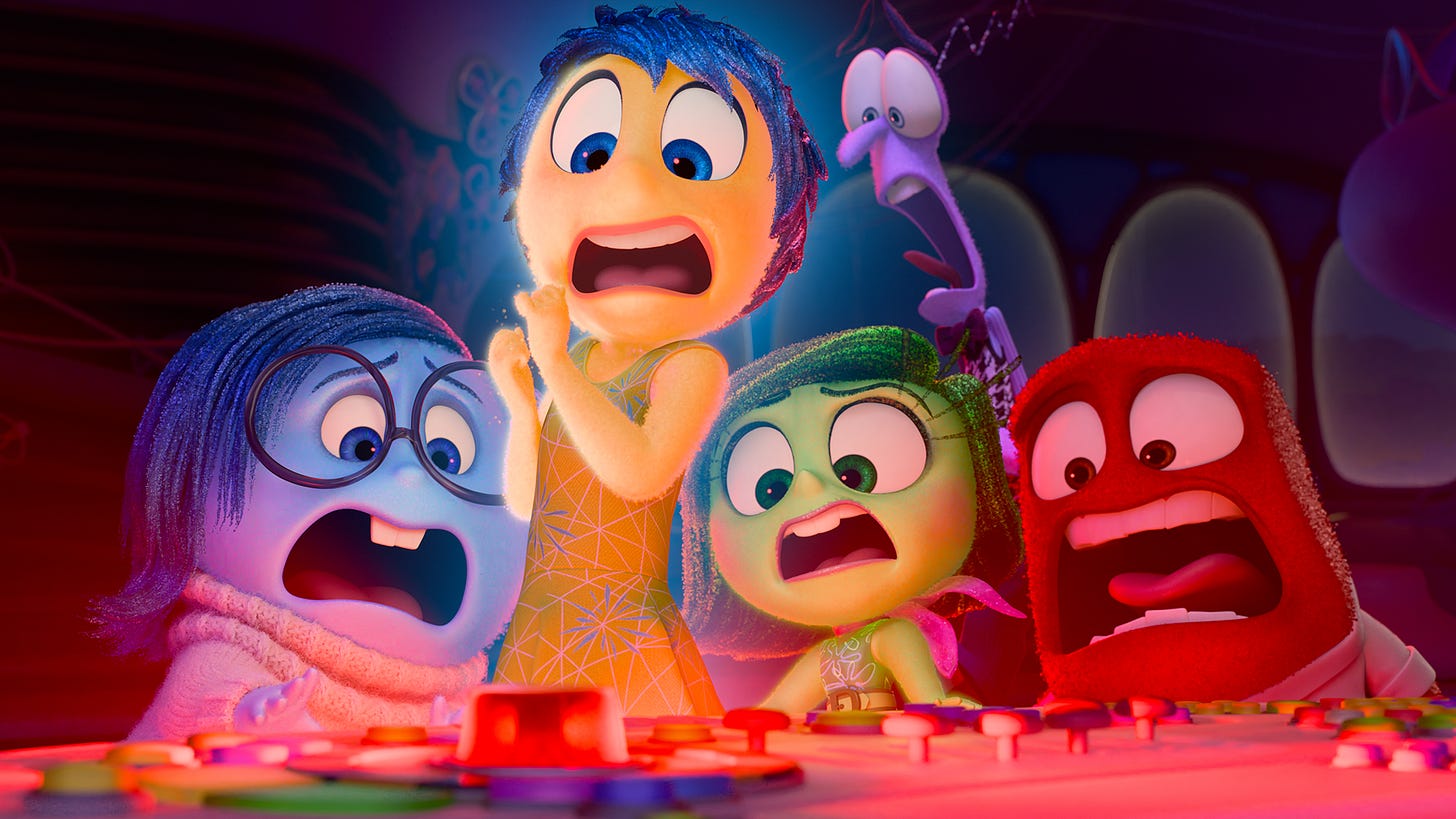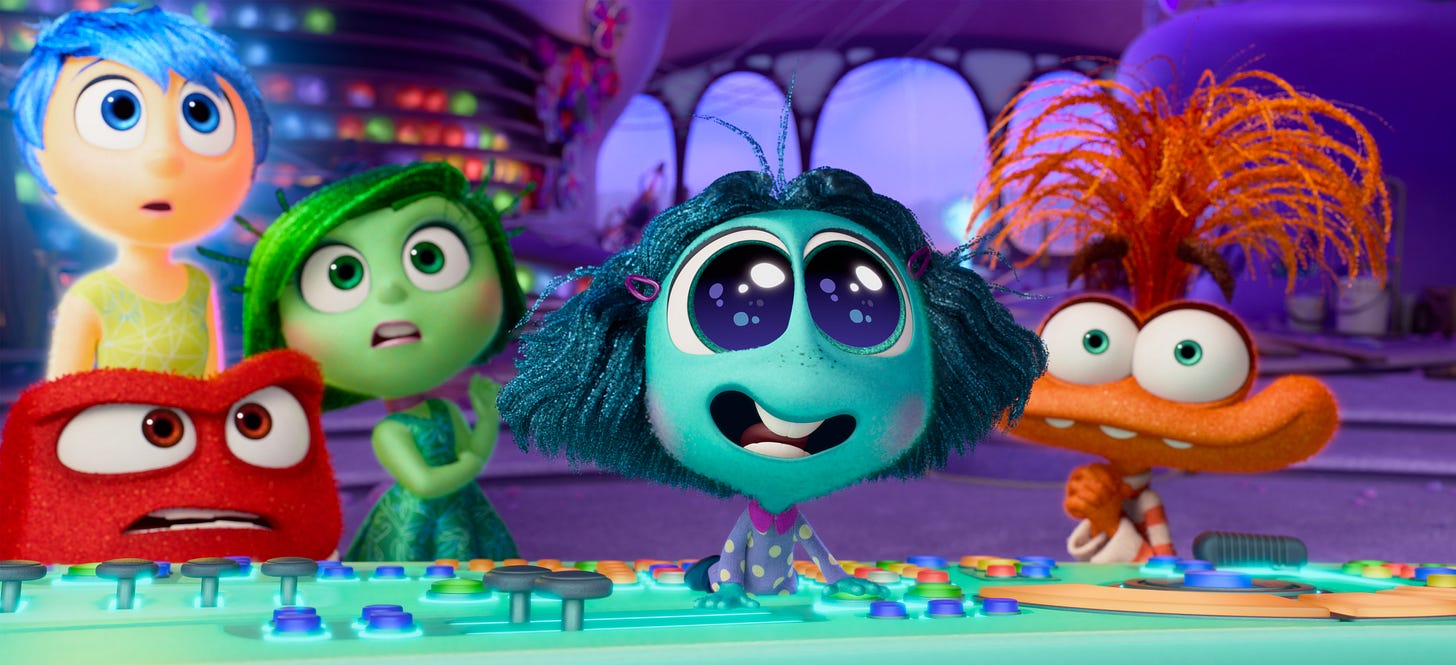Review: ‘Inside Out 2’ is a compelling, heartfelt sequel but retreads familiar ground
“Inside Out 2” marks a return to form for Pixar, pushing the boundaries of imagination and innovation but held back by a familiar narrative.

Following up a masterpiece is no easy task. The first “Inside Out” film marked a perfect jewel in Pixar’s crown, as a profound, emotional and wildly innovative hit that resonated with audiences of all ages. Everything about the film is so perfect that a sequel hardly felt necessary – but nine years later “Inside Out 2” has arrived.
While it doesn’t quite reach the perfection of the original, “Inside Out 2” is a solid, entertaining, and emotionally resonant continuation that builds beautifully on the first film, while also feeling a bit too familiar.
The sequel dives deeper into the complexities of growing up, introducing new concepts like beliefs, identity, and one’s sense of self. These additions are not just intriguing — they’re essential to the emotional foundation that makes the “Inside Out” universe so compelling. This time, we meet new emotional characters like Anxiety, Embarrassment, Envy, and Ennui, each adding a unique flavor to Riley’s emotional landscape.
Where the first film tackled depression and sadness, “Inside Out 2” shifts its focus to anxiety, perfectly capturing the tumultuous period of puberty. Riley is now 13, and just when she thought she had everything figured out, puberty strikes, throwing her emotions into chaos once again. Anxiety (voiced by Maya Hawke) takes the lead, both helping and hindering Riley as she navigates the challenges of high school, tries to impress new friends, and aims to make the varsity hockey team.
One aspect that holds “Inside Out 2” back from reaching the heights of its predecessor is its somewhat familiar territory. The story, while emotionally compelling, follows a similar plot structure to the first film. Once again, the emotions find themselves locked out of headquarters and must journey back to save Riley. This time, it’s the whole gang rather than just Joy and Sadness. While the story they’re telling is still engaging, how they’re telling it could have benefitted from a different narrative approach to freshen things up.
Additionally, the situation leading to the emotions being kicked out of headquarters stems from Joy’s controlling nature. She believes she should be the one leading Riley’s emotions, which somewhat undermines the lessons learned in the first movie about working with other emotions and finding balance. This repetition feels a bit repetitive and detracts slightly from the overall impact, since these issues were supposedly resolved in “Inside Out.”

Despite these minor flaws, the film’s core message of embracing all parts of oneself is powerful and moving. It beautifully illustrates how every experience shapes our beliefs and personality – not just the good ones. The representation of negative emotions like Anxiety, Envy, and Embarrassment is particularly well done. There’s an intense depiction of a panic attack during the film’s climax that drives home the message that all emotions – even the challenging ones – are essential.
Maya Hawke shines as the voice of Anxiety in a performance that’s both frantic and hysterical, perfectly capturing the essence of the emotion. Ayo Edebiri, in a lesser role, steals the show as Envy, bringing a vibrant and laugh-out-loud funny energy to the character. Edebiri is one of the industry’s brightest stars and her talent seems to know no bounds, and this role only further cements it. (Also, as an aside, how fun to see her go from a tween terrorized by emotions in “Big Mouth” to now being the emotion terrorizing the tween?) Tony Hale, Lewis Black, and Liza Lapira seamlessly take over the roles of Fear, Anger, and Disgust, respectively, while Kensington Tallman voices an older, more prominent Riley with ease.
The animation, as expected from Pixar, is stunning. The studio takes advantage of this sequel to experiment with different animation styles in fun and unique ways. A standout sequence features a “Dora the Explorer”-esque children’s show with audience participation, alongside a segment that mimics a PlayStation 2-era video game character. These creative choices blend seamlessly into the “Inside Out” world, showcasing Pixar’s ability to innovate within their established universe.
As with the first film, it will be interesting to see how “Inside Out 2” resonates with younger audiences. Certainly it will be a financial success due to the fact it’s an animated Pixar film – the first movie is the studio’s fifth-highest grosser – but when it comes to target audience the movie definitely hits home more with an older crowd. It’s certainly still enjoyable for children, but its themes of puberty, anxiety, and panic attacks are more likely to connect deeply with parents, adults and teens. These mature themes might go over the heads of the traditional younger Pixar audience while adding a rich layer for older viewers, but there’s still plenty to keep the kids laughing.
“Inside Out 2” marks a strong return to form for Pixar, as the studio’s best film since 2020’s “Soul.” It’s not quite the masterpiece the first film was, but it’s a deeply enjoyable and thought-provoking sequel that expands on the original in meaningful ways.
Star Rating: 4 out of 5.
“Inside Out 2” releases only in theaters on June 14, 2024.
The post Review: ‘Inside Out 2’ is a compelling, heartfelt sequel but retreads familiar ground first appeared on Inside The Film Room.




